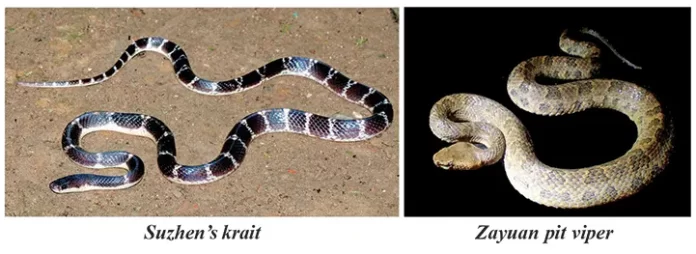ITANAGAR, 29 Jun: A team of researchers has found two species of venomous snakes from Arunachal Pradesh and Nagaland.
The snakes, which have been reported for the first time from India, were Suzhen’s krait (Bungarus suzhenae) and the Zayuan pit viper (Ovophis zayuensis).
While the Suzhen’s krait was found from the Jessami-Meluri road on the Nagaland and Manipur border, the Zayuan pit viper was found from the Dri River bank near Etabe village in Dibang Valley district.
These snakes belong to the families Elapidae and Viperidae, and are known for their neurotoxic and haemotoxic venom property, respectively.
Northeastern India is home to approximately 21 species of venomous snakes from the families Viperidae and Elapidae. With the addition of these two species, the list moves up to 23 for the region, Abhijit Das of the WII, who was a member of the study team, informed in a release on Saturday.
He said that, out of the eight species of venomous kraits from India, Northeast India holds the maximum species diversity of five.
“Despite several fatalities by other Bungarus species, commercial antivenom is manufactured only against the most widespread congener B caeruleus. This new finding reported here also indicates the lack of systematic studies on this group of snakes, especially in northeastern India,” stated a paper published by the researchers from the Wildlife Institute of India (WII), Dehradun, and the Natural History Museum, London,in the latest edition of the journal Threatened Taxa.
The study stated also that the actual distribution of the ground-dwelling Zayuan pit viper in Arunachal may be far larger than currently understood. Similarly, the distribution of the dangerously venomous Suzhen’s krait in Northeast India needs further investigation, the release said.
“Therefore, proper identification of such venomous species and understanding of geographic distribution,backed up by genetic data, is crucial for general awareness, venom research, as well as development of lifesaving antivenin,” the study said.
It also emphasised the importance of recognising other medically important snakes, especially from Northeast India, for snake antivenom research and manufacture.




